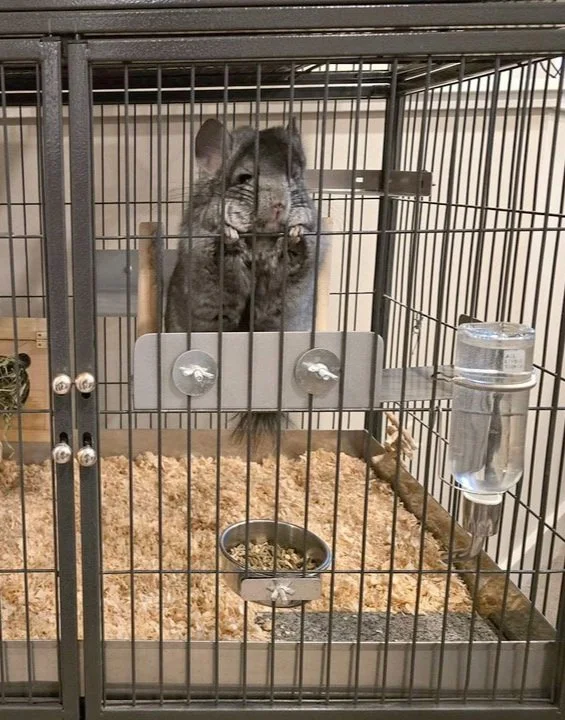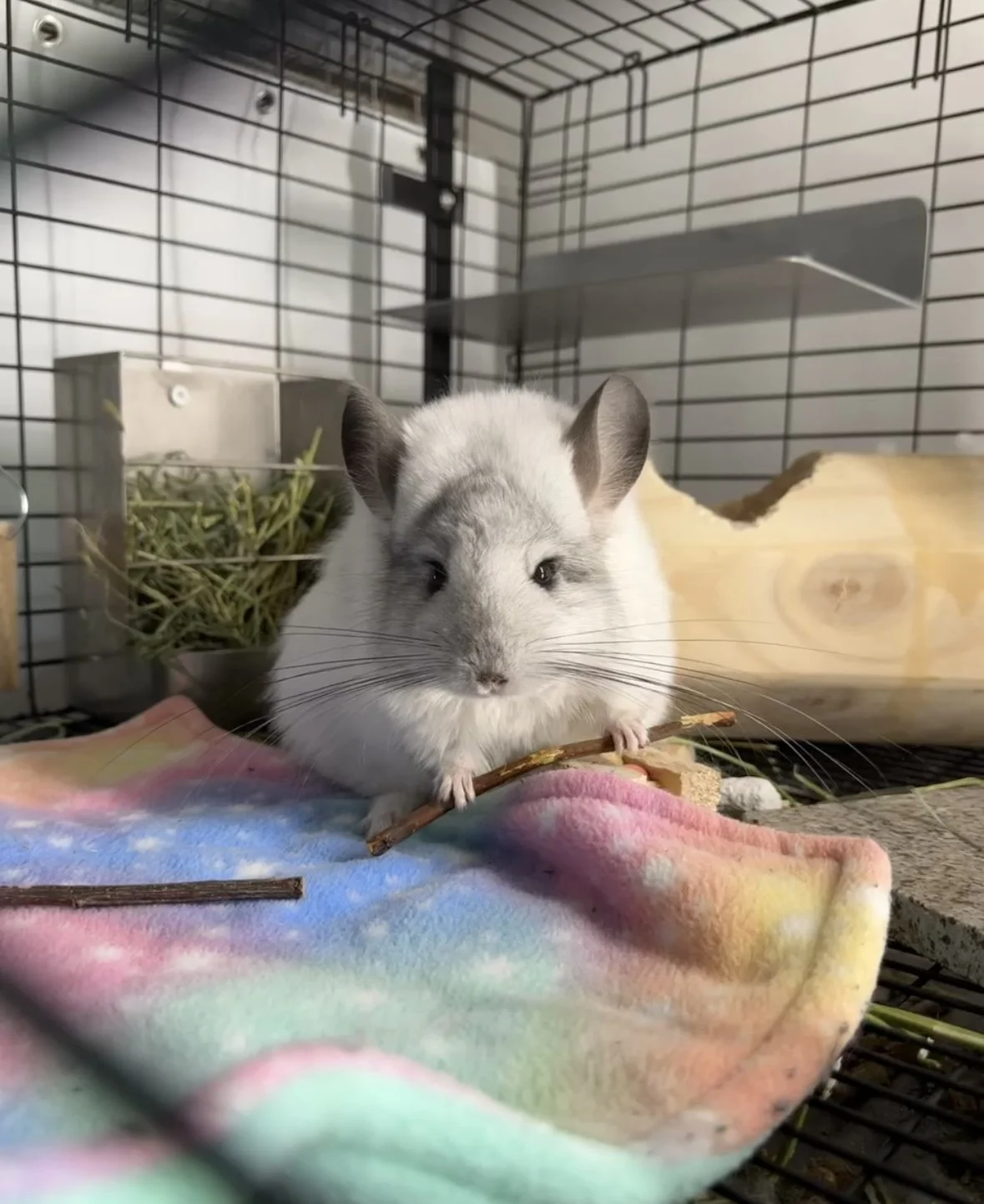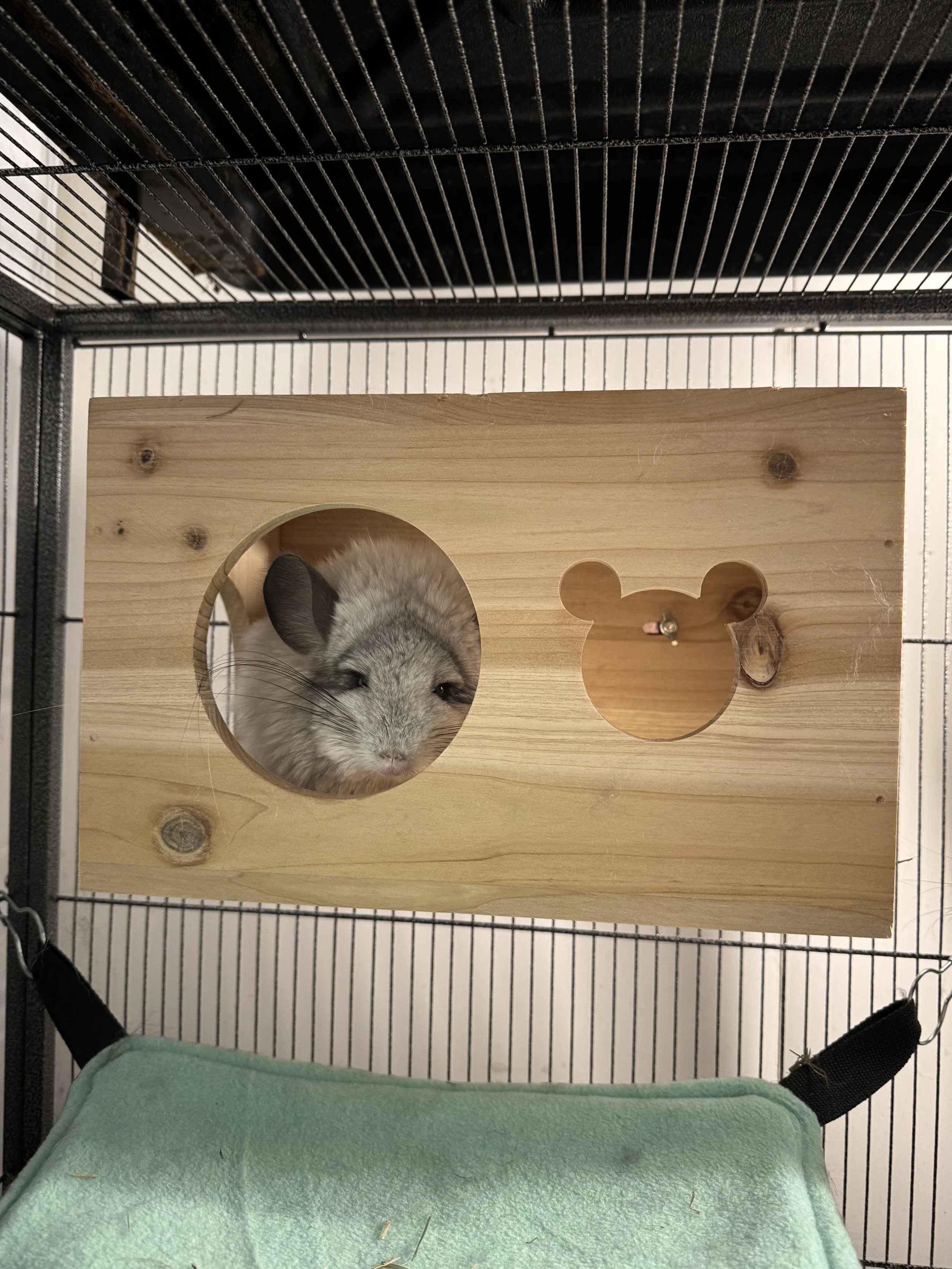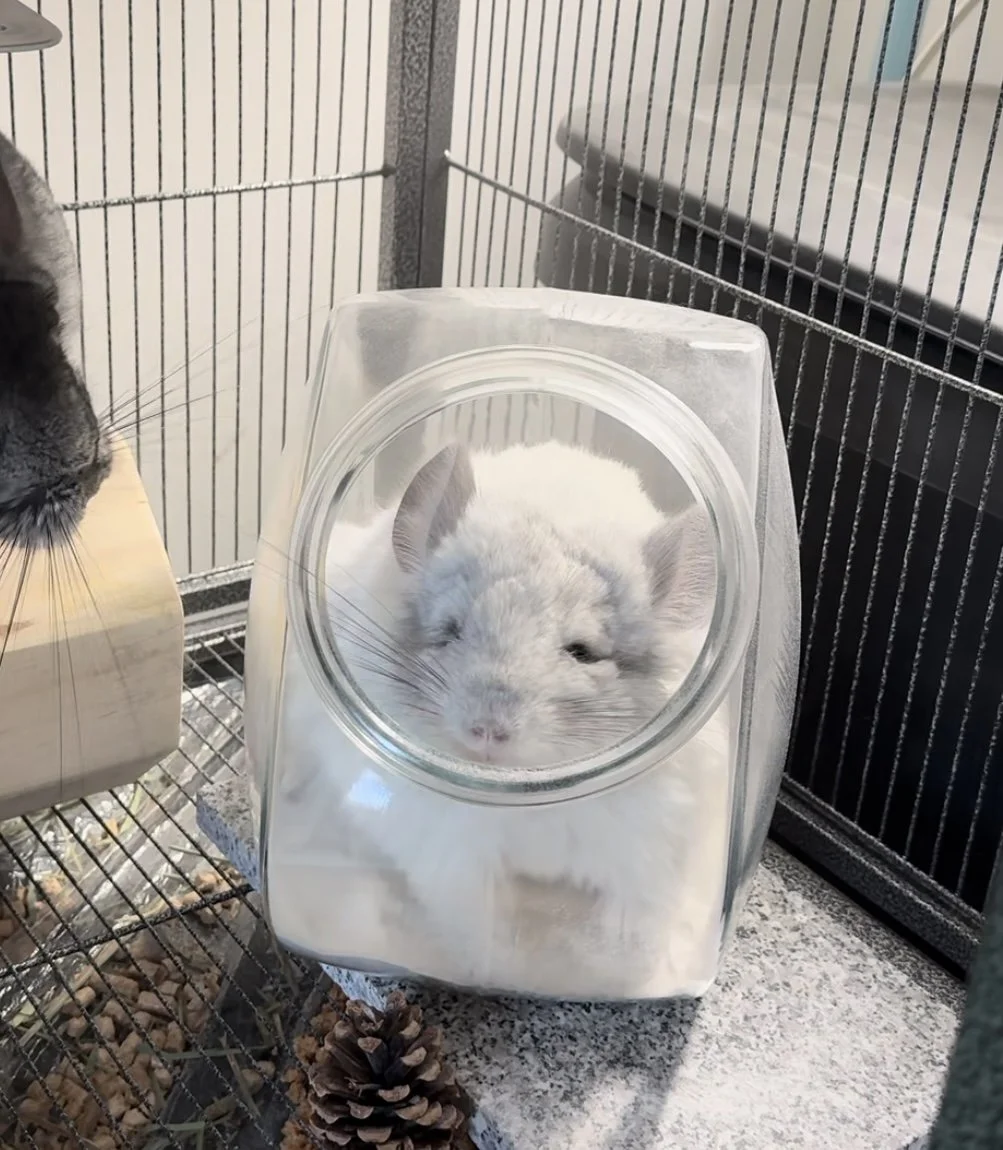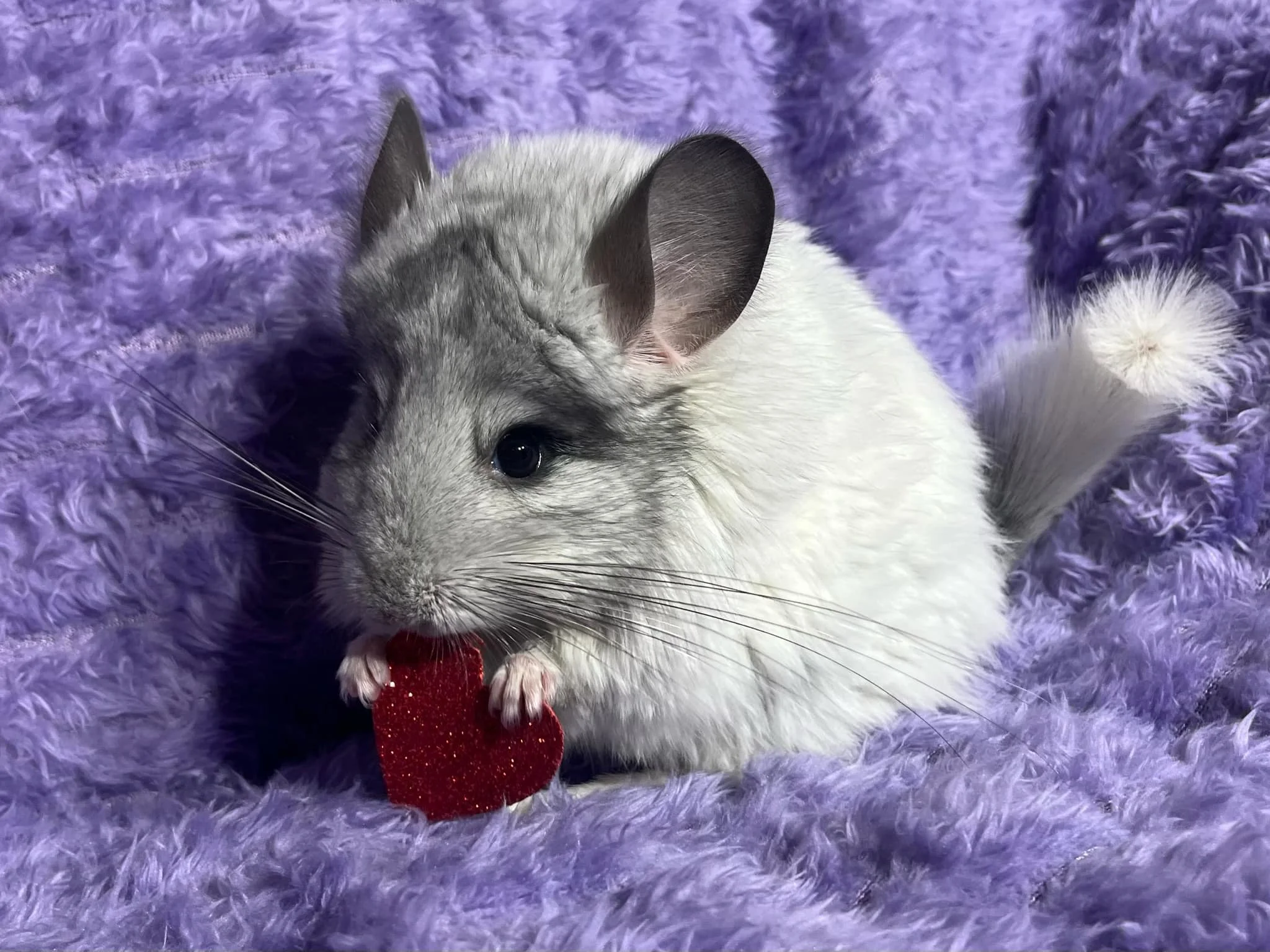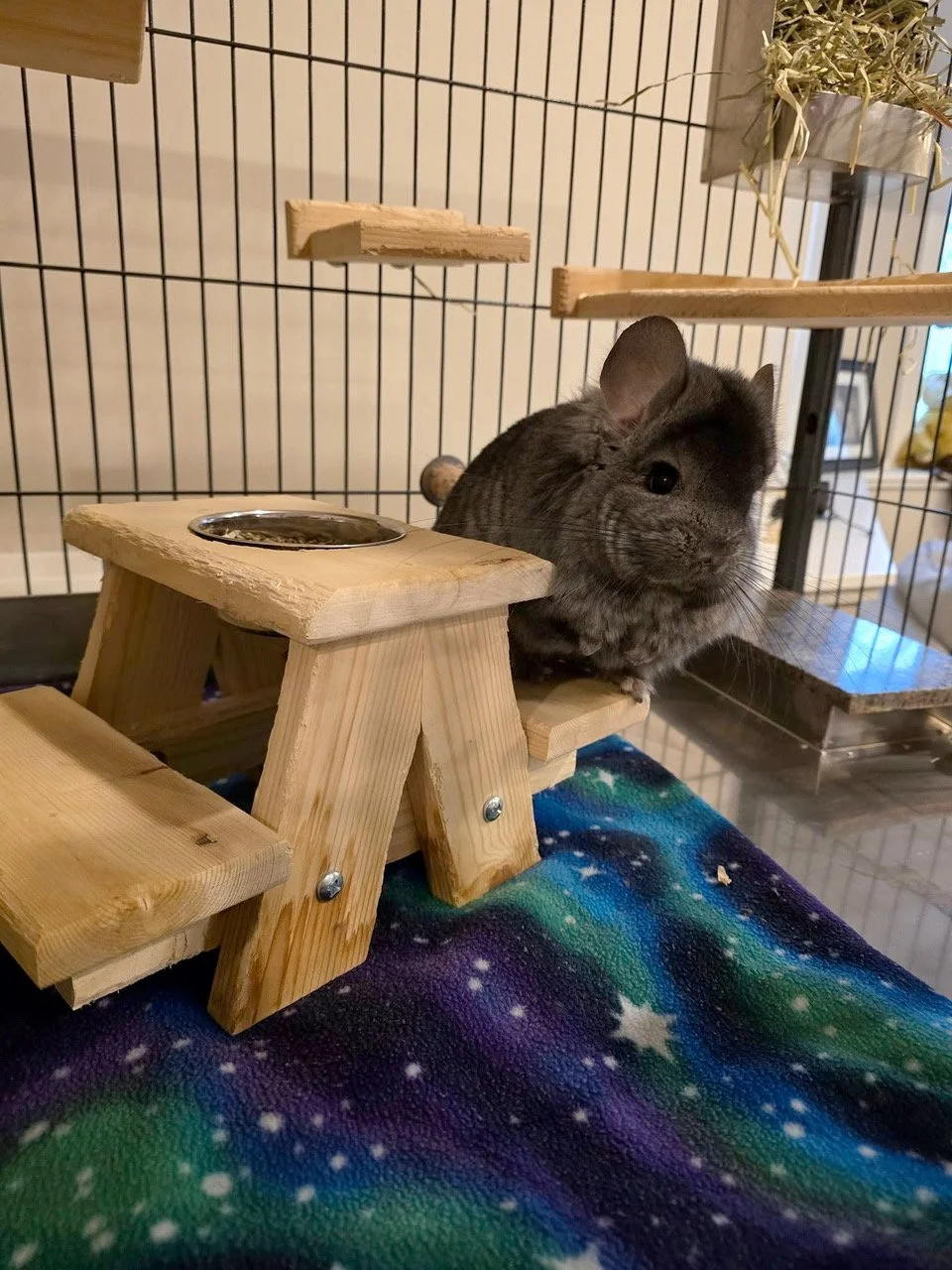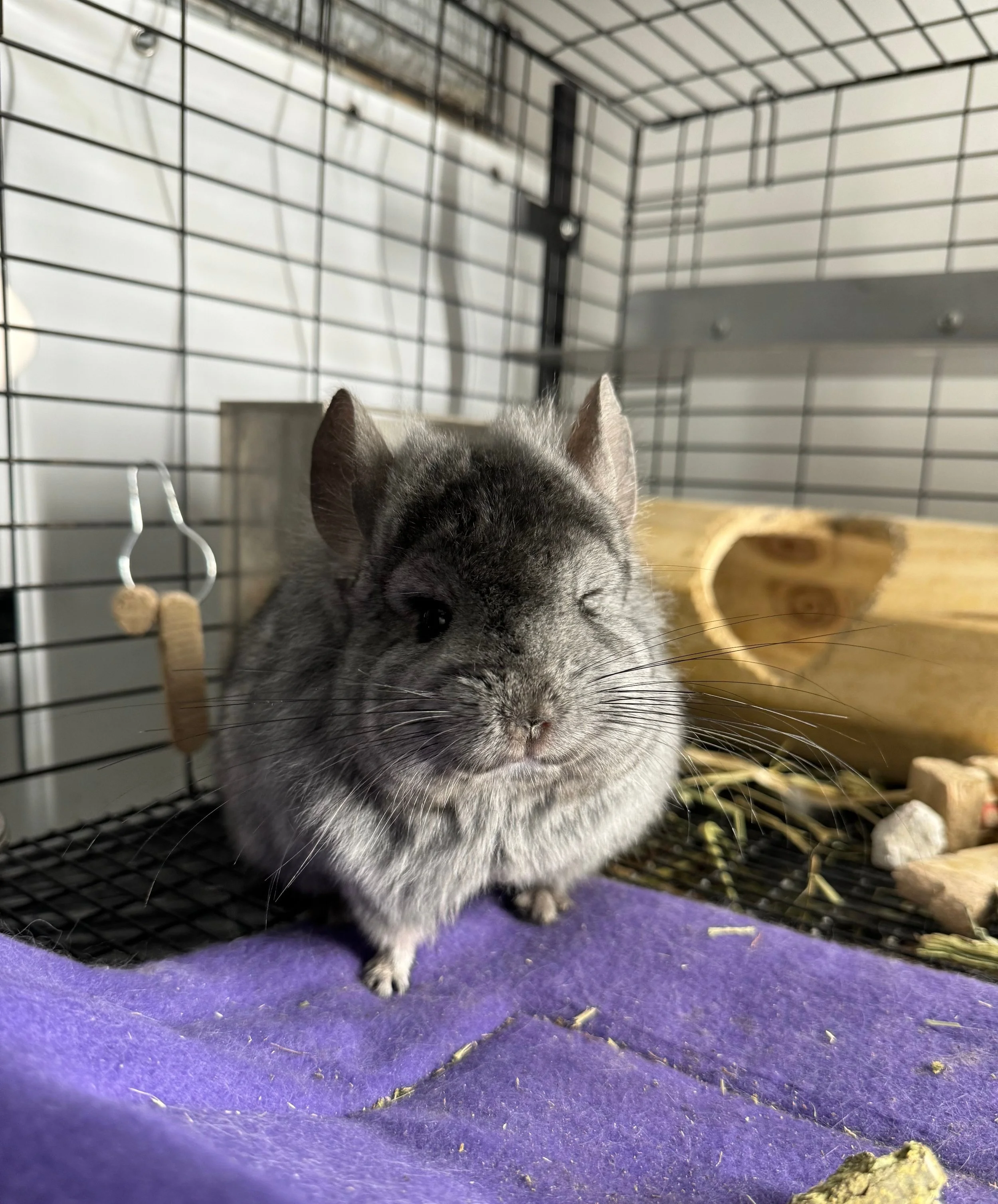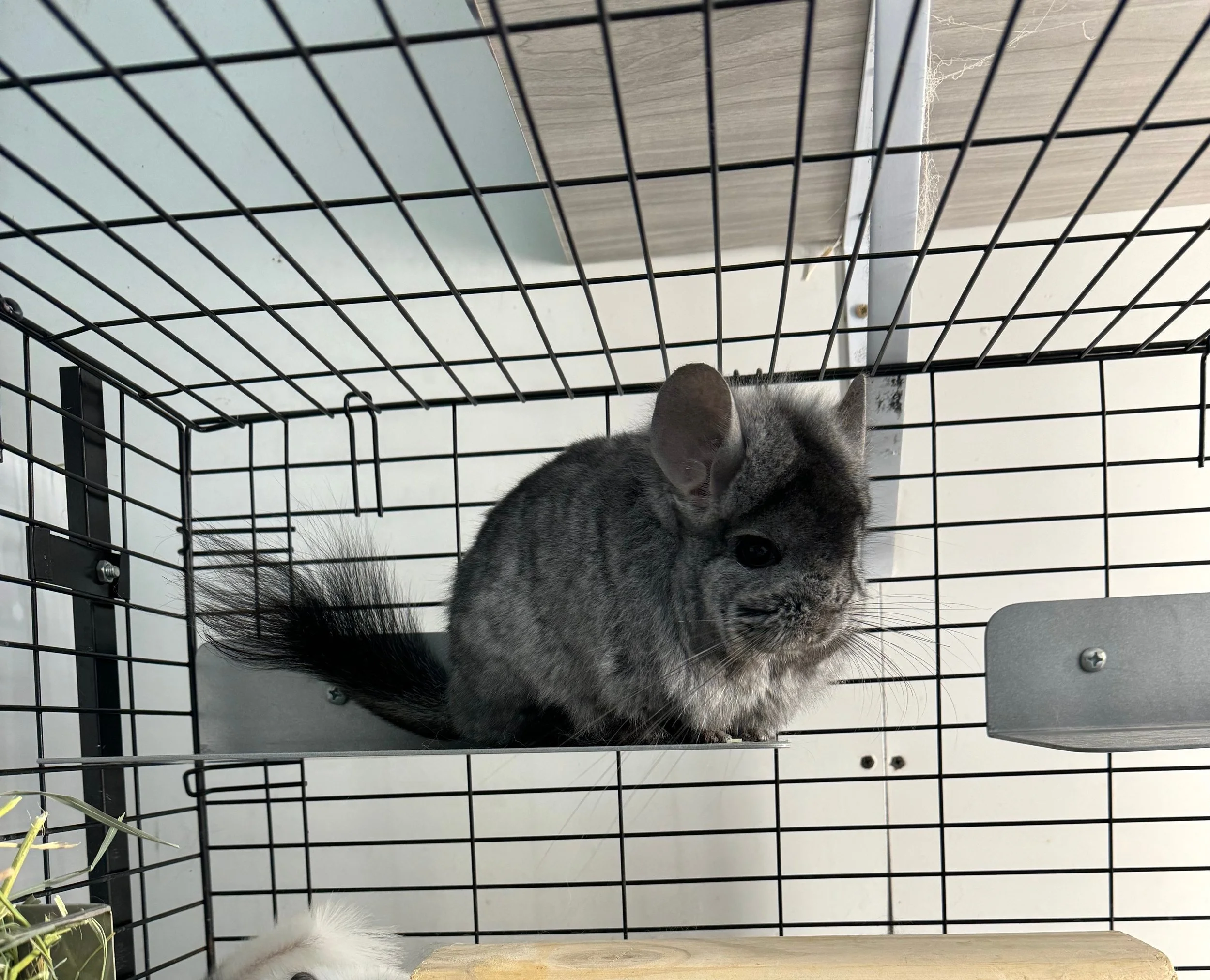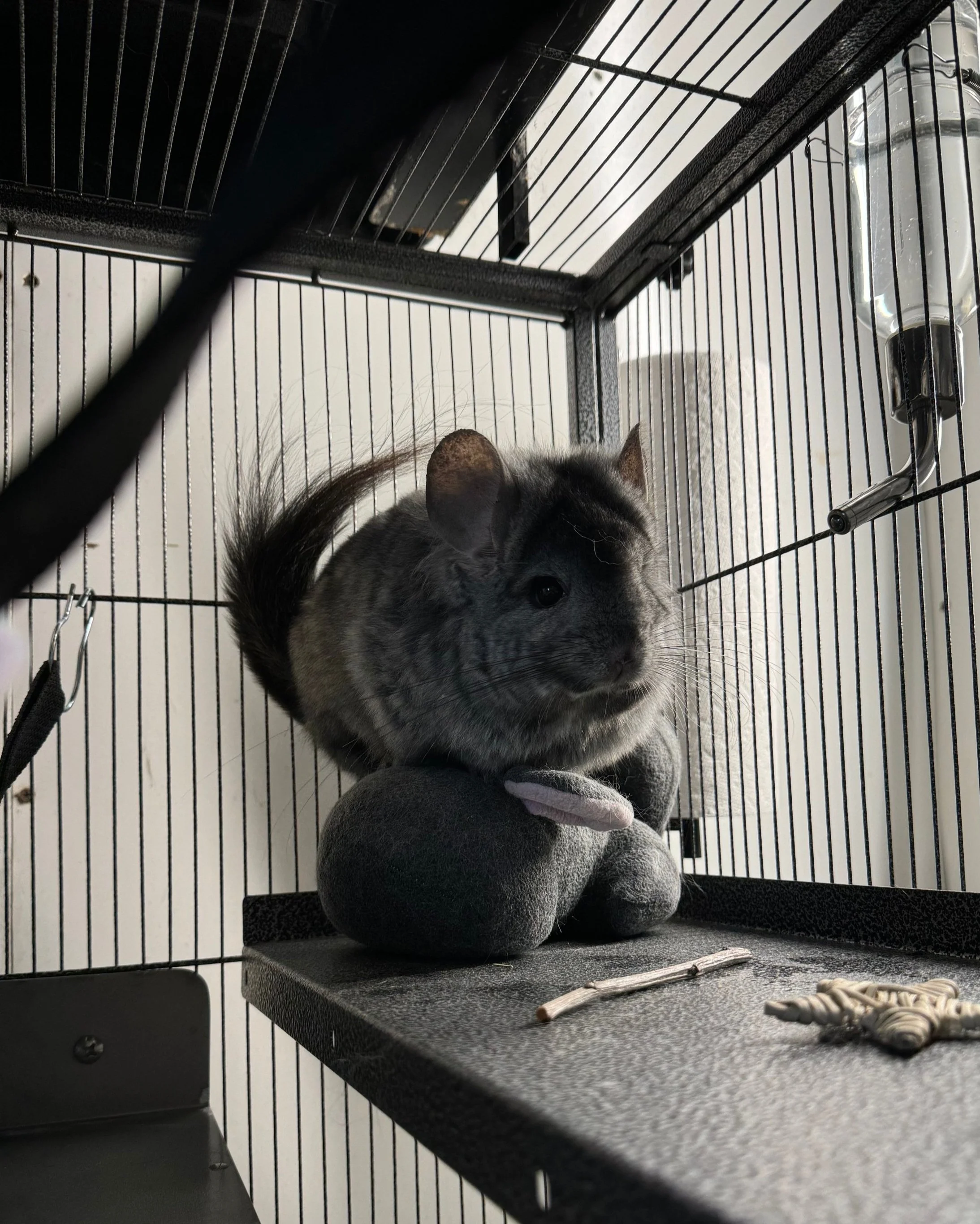Harebell Chinchillas
We’re pleased to announce the addition of angora chinchillas to our program in 2025. Known for their exceptionally soft coats and gentle, inquisitive nature, chinchillas make wonderful and unique companions. Our focus is on raising exceptionally well-socialized, healthy chinchillas with award winning temperaments.
Chinchillas at a glance
Chinchillas are unique, high-energy companions originally native to the Andes Mountains of South America. Often described as hypoallergenic, they can be a great option for individuals with mild allergies—but they are not suitable for those with asthma, due to the fine dust used for their bathing routine.
These are delicate animals that thrive in cool, stable environments (ideally between 50°–70°F) and should be kept away from direct drafts, fans, or outdoor exposure. While they cannot be litter trained like rabbits and cannot have the same array of fresh foods and treats as rabbits, chinchillas are intelligent and can learn simple tricks and form strong bonds with patient, gentle owners.
Naturally very active and quick, chinchillas are best suited for adult caretakers or older, responsible children. They are not ideal for households with young kids or for those seeking a cuddly, low-maintenance pet.
With proper care, a chinchilla can live 15 to 20 years—making them a rewarding, long-term commitment for the right home.
Our Chinchillas
Sachi
Mosaic RPA (Royal Persian Angora) female
Haiku
Ebony RPA (Royal Persian Angora) male
FAQs
-
A healthy chinchilla diet is high in fiber and low in fat, sugar, and moisture. Their digestive systems are delicate, so consistency and quality are essential. Here's what they need:
Quality Alfalfa-based Pellet - We recommend Manna Pro/Sho (rabbit feed), Pen Pals (rabbit feed), Science Selective (chinchilla feed), or Oxbow Essentials (chinchilla feed, red bag ONLY). It is not recommended straying from one of these 4 pelleted options. Offer free pellet access to chinchillas of all ages.
Free Access to Hay - Angoras require higher protein content to support fur growth and prevent fur blocks. We recommend feeding angoras an alfalfa or alfalfa/grass blend hay. Loose hay is preferred, but they also enjoy compressed hay cubes for variety. Alfalfa, Timothy, Orchard, and Brome are also acceptable hay varieties to feed your chinchilla.
Treats should be kept to a MINIMUM!! This is VERY important for the health and safety of your chinchilla. Absolutely NO fresh foods (veggies or fruits), NO yogurt drops, or other high sugar/fat/moisture foods. You may safely feed SMALL amounts of the following foods 2-3x a week: wheaties, old fashioned oatmeal, dried herbs & flowers. We love shopping at Ronda’s Chins for our treats & chews
Chews - Chinchillas LOVE to chew and WILL chew on everything. Absolutely avoid ANY plastic in their enclosure or playpen areas. We recommend offering a variety of wood twigs to kelp keep your chinchilla happy and healthy. The following types of twigs can be given multiple times a day: apple, red elm, poplar, sycamore, willow, cottonwood. Chinchillas also love natural pumice stones, grass balls, and pinecones!
-
Adult Chinchillas need a spacious, well-ventilated cage designed for hopping and horizontal movement, not vertical climbing. While taller cages with shelves are common, floor space (width and depth) is more important than height, as chinchillas are ground-dwelling hoppers, not climbers like squirrels.
Cages should have multiple levels with shelves (ramps can be very unsafe), and always provide safe landing and solid resting areas. Wire floors are generally safe when high-quality and properly maintained, especially if chinchillas have access to solid surfaces (like tiles, wood, or fleece-covered platforms) to rest their feet and prevent bumble foot.
* Please note that chinchillas under 6-8 months of age should have smaller, single-level homes to prevent accidental falls and injuries while they grow.Include:
Hideouts or ledges for privacy
Safe chew toys (wood, pumice, loofah)
Chew-proof water bottle, pellet dish, and hay rack (glass or metal only)
Temperature control: Keep habitat in a room between 60–73°F, away from windows, direct sun, drafts, and fans.
Use anti-pill fleece for liners and hides ONLY (other fabric types can be harmful)
Avoid:Plastic shelves or accessories (chinchillas will chew & ingest plastic)
Multi-level "ferret" cages with unsafe drops
Open play spaces without supervision (they’re escape artists!)
-
Chinchillas will bond with patient owners and can even learn simple tricks. They can be shy at first, requiring gentle handling and consistency to gain trust. Chinchillas are social in the wild and may benefit from a same-sex companion. However, introductions must be slow and supervised, and not all chinchillas get along, even if they have gotten along for years before.
-
Chinchillas take dust baths, not water baths. (NEVER get your chinchilla wet.) It is VERY important for a chinchilla to have a dust bath 2–3x per week (NON NEGOTIABLE) in a shallow container to keep their dense fur clean and skin healthy. We use a small candy jar. Our favorite brands are Chill Dust and Oxbow Poof.
-
With proper care, chinchillas can live 10 to 15 years on average, and some live into their late teens. Their long lifespan makes them a long-term commitment, not a short-lived pet like hamsters or mice. Chinchillas are considered exotic pets, so they need a licensed exotic animal veterinarian. Not all general vets are trained to treat chinchillas. It’s important to find an experienced exotics vet in advance—especially for emergencies.
Schedule yearly wellness exams to catch issues early.
Dental problems, GI stasis, and heatstroke are common concerns.
Always have a travel-safe carrier and vet contact ready in case of urgent care needs.
-
Our Pet Quality Angoras: $500–$2,000
Royal Persian Angoras are a rare and highly sought-after variety of chinchilla known for their extraordinarily long, silky fur and distinct appearance. Their higher price reflects several factors:They are harder to breed successfully due to smaller litter sizes and more delicate genetics.
Their gestation is around 111 days and typically will only produce 1-2 kits per litter, & only 1-3 litters per year.
Royal Persian Angoras are genetically rare, with limited breeding stock worldwide.
It takes more time for Angoras to mature enough to assess coat quality and breeding potential.
We take the socializing process VERY seriously to ensure your new addition is friendly and well-adjusted to domestic home environments. We spend A LOT of time working with our chinchillas and desensitizing them to make sure this happens.
